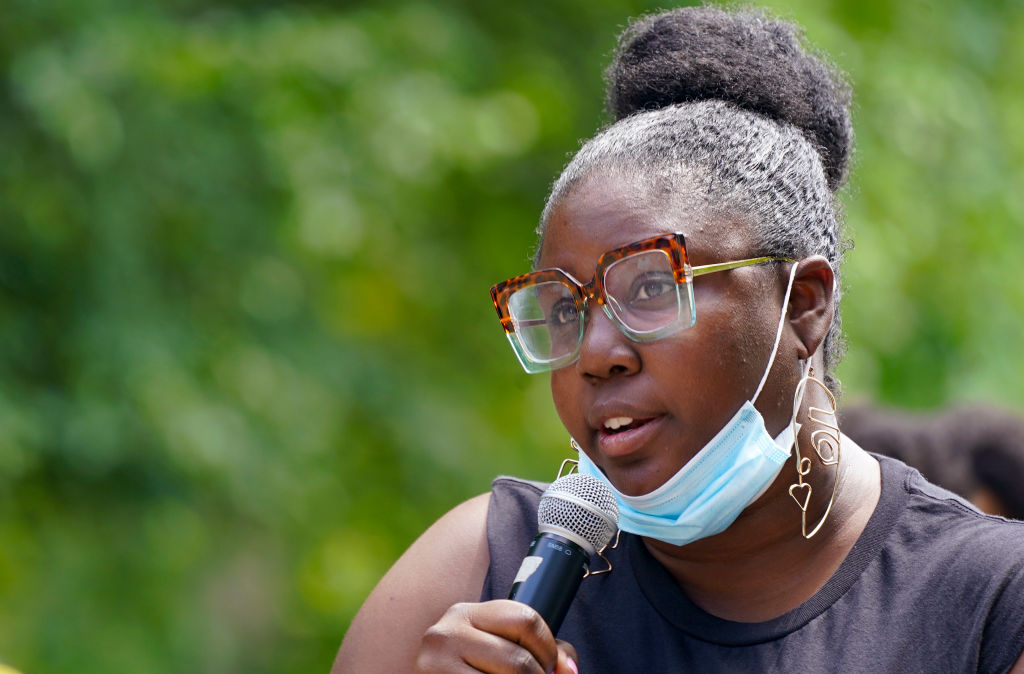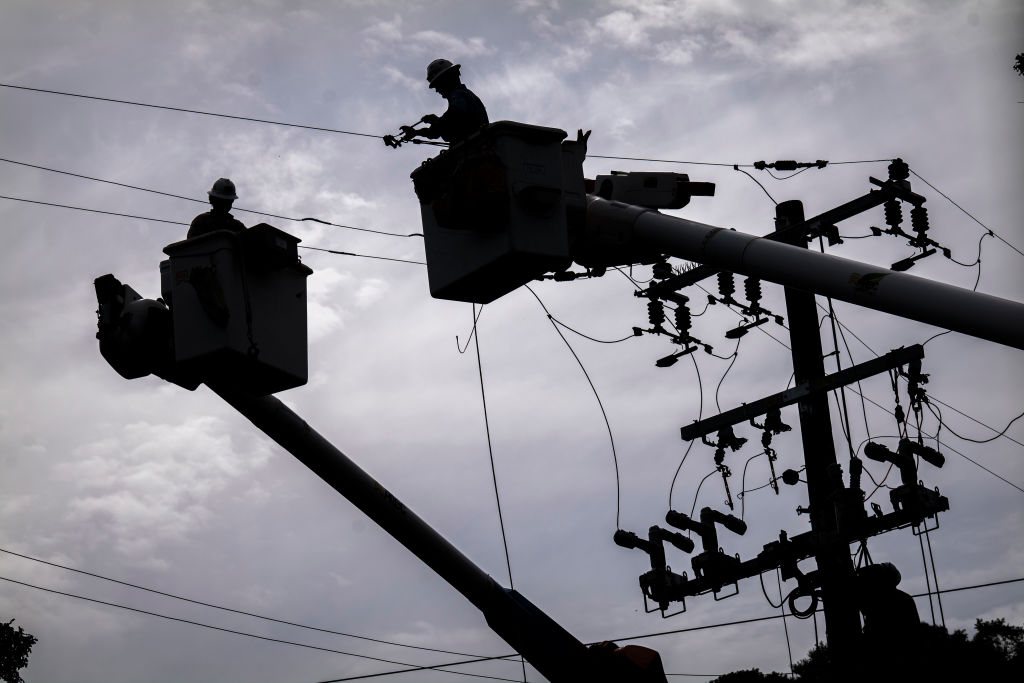
Inside the Fiasco at the National Security Council
April 24, 2025
Trump Is A Menacing Clown!
April 24, 2025Sweeping cuts to Title X threaten to dismantle the reproductive healthcare safety net for millions, says All* Above All’s Nourbese Flint—deepening disparities, shuttering clinics and putting lives at risk.
The Trump administration earlier this month cut more than $65 million in federal funding for family planning under Title X, the program signed into law by President Richard Nixon that has supported comprehensive family planning and related preventive health services—including contraception, cancer screenings, infertility treatments, pregnancy care and STI testing—for low-income Americans since 1970. The cuts will impact dozens of clinics nationwide, including nine Planned Parenthood affiliates, and leave seven states without any Title X funding—to say nothing of other funding cuts and freezes to social services like Social Security and Medicaid.
Planned Parenthood provides millions of Americans with services like birth control, abortion and cancer screenings every year. Utah, one of the seven states that lost all of its Title X funding as a result of the cuts, is already losing two of the state’s eight Planned Parenthood clinics on April 30 and May 2, respectively. “This is not a decision we have made lightly. This is a decision we are forced to make because of the Trump administration,” interim president Shireen Ghorbani told The Salt Lake Tribune.
Clinics in other states will most likely soon be forced to follow suit, with nearly one in four Title X clinics in 23 states affected by the funding freeze.

The cuts to reproductive health funding also go hand in hand with looming cuts to Medicaid, since many hospitals and clinics depend on Medicaid funding. Approximately 18.5 million adult women—a disproportionate amount of whom are women of color and people in rural areas—rely on this joint federal and state government program that provides health insurance to people with limited income and resources.
In March, Nourbese Flint, president of the national abortion justice organization All* Above All, wrote a piece for Ms. about Republicans’ proposed cuts to Medicaid, which would strip healthcare from millions of Americans, including 40 percent of all pregnant women in the United States.
Last week, I spoke with her about the Title X freeze on reproductive healthcare and the long-term effects of these funding cuts, which will put infant and maternal healthcare even more in jeopardy.
The Costs of Cutting Care
“Freezing Planned Parenthood funding … is actually catastrophic to reproductive health,” Flint told Ms. Even though Planned Parenthood is the largest reproductive healthcare provider in the country, attacks on reproductive healthcare at the state level in the almost three years since Dobbs have already forced individual clinics to shut down in states with bans.
“There are still gross disparities, depending on where you live, in whether you’re able to get service or not,” Flint said.
Meanwhile, Planned Parenthood clinics in states where abortion is still legal have had to make massive changes to their operations to support the influx of out-of-state patients who rely on their services after traveling for reproductive healthcare.
According to Flint, “cervical cancer is incredibly low in this country, and it’s because we have folks who get routine pap smears. It’s a slow-moving cancer and it’s highly, highly able to treat if you catch it early.” She explained, “This is a problem that folks have in other countries that we luckily do not have in the U.S. because we have regular pap smears and folks have access to reproductive healthcare”—access that the Title X freeze will severely limit for millions of Americans.
Looking ahead to the next few years, Flint and other advocates also worry that the funding cuts will mean higher rates of infant mortality. These rates in the U.S. were already higher than in previous years after the Dobbs decision overturned Roe v. Wade, according to research published in 2024. Abortion bans limit access to healthcare for both mothers and babies, partially because many states have seen an exodus of OB-GYNs after enacting abortion bans, reducing the overall number of maternal healthcare providers.
“In states that have cut their reproductive health access, particularly abortion access, we’ve seen higher rates of infant mortality. We’ve seen higher rates of maternal complications and creeping maternal mortality rates as well,” Flint said. “And so I only expect those things to get worse if we cut clinicians in places where people can get care.”
Another possible result of the cuts: a vast reduction in sex education programs.
The already poor state sex ed in this country is partially tied to the current rise in misogynist ideology and the growing political gender gap between young women and young men. After a Trump campaign where appeals to American masculinity dominated, more than half of young men under 30 voted for him in November, four years after Joe Biden won a similar share of the same group. As Flint pointed out, “one of the things fundamentally that [we’re] seeing with the radicalization of men … is around healthy relationships and being able to be in relationships. Planned Parenthood and other reproductive health clinics are also folks who talk to folks about healthy relationships and sex education.”
Given recent rises in internet misinformation and manosphere influencers, with fewer resources available from trusted sources like reproductive healthcare clinics, young people “are going to be further isolated and radicalized by folks who do not have their best interests at heart.”
Reproductive Healthcare on the Chopping Block
The recent funding freeze for reproductive healthcare services is just the latest move from the Trump administration’s antiabortion playbook. When we spoke, Flint explained how the cuts represent yet another way Republicans are stripping away access to reproductive healthcare by making abortion near-impossible to access.
Legislation surrounding “fetal personhood” is also gaining traction. In January, Rep. Eric Burlison (R-Mo.) introduced a new bill—the so-called Life at Conception Act—that would ban abortion nationwide by applying American citizenship to fetuses, as well as banning IVF and putting women at risk for criminal prosecution for any actions that might hurt their pregnancy.
In abortion-ban states with “life-of-the-mother” exceptions, there’s still no guarantee that women can access even life-saving abortion care. Last year, Louisiana passed a bill classifying abortion medications mifepristone and misoprostol as controlled substances, meaning that hospitals need to store them separately where they’re harder to access, even in emergencies where minutes could make a difference when it comes to saving a life. The tragic and preventable deaths of at least 10 women since Dobbs show that life-of-the-mother exceptions do little when it comes to actually saving pregnant women from dying after state laws deny them medically necessary abortions.
Even though abortion is still legal in 21 states, the Title X funding freeze for reproductive healthcare will affect clinics in ban states and protected states alike. Stripping away funding is the latest step in the death-by-a-thousand-cuts strategy that antiabortion extremists are using to make abortion and other crucial healthcare impossible for women to access, even without a national abortion ban in place (for now).
Flint explained that the funding cuts are just one of many ways the GOP can make abortion access completely intangible, “whether that is through funding cuts, whether that is through [the] Comstock [Act], whether that is through criminalizing medication abortion, whether that’s through going after providers. … All of those pieces are in a combination, a way to impact reproductive healthcare.”
Fighting Back
With healthcare under large-scale attack by the federal government, advocacy by individual people and communities is more crucial than ever for helping others find needed care that is becoming harder and harder to access at the state level.
To support people hoping to organize for reproductive health in their own communities, Flint’s organization, All* Above All, has put together the Abortion Justice Playbook, which compiles information about intersectional issues like abortion access, prenatal care and maternal health. It also offers strategies for advocacy groups and constituents to get involved to influence policies at the state level and in local municipalities.

According to Flint, the playbook encompasses not just “D.C. strategy” but also “in-the-street strategy” to help people organize across their neighborhoods and communities.
All* Above All is also developing a home reproductive toolkit, which will include a guide for community organizing. “We’re really at this kind of crossroads in our country,” Flint said, “where if you care about reproductive health, if you care about autonomy, if you care about voting, if you care about democracy, if you care about people of color, this is the moment that we actually need to do everything that we can to organize and fight back”—whether that means doing art as a form of protest or joining an organization.
Meanwhile, collectively organizing communities will help promote the kind of healthy relationships that Flint says are dwindling in the U.S. as young people become more radicalized and influenced by the far right. A growing lack of healthy relationships, she said, is “one of the root causes of where we are now and why people have felt so disheartened and abandoned and alone,” along with the economy and dwindling sex ed contributing to the radicalization of young men.
“Sometimes it’s just some of the basic pieces of community,” Flint said, “and that is a reproductive justice issue, and why it is important to hold all of these things together. So we cannot have economic justice without reproductive justice. Cannot have democracy or repro because all of those things are linked.”
Great Job Ava Slocum & the Team @ Ms. Magazine Source link for sharing this story.


















